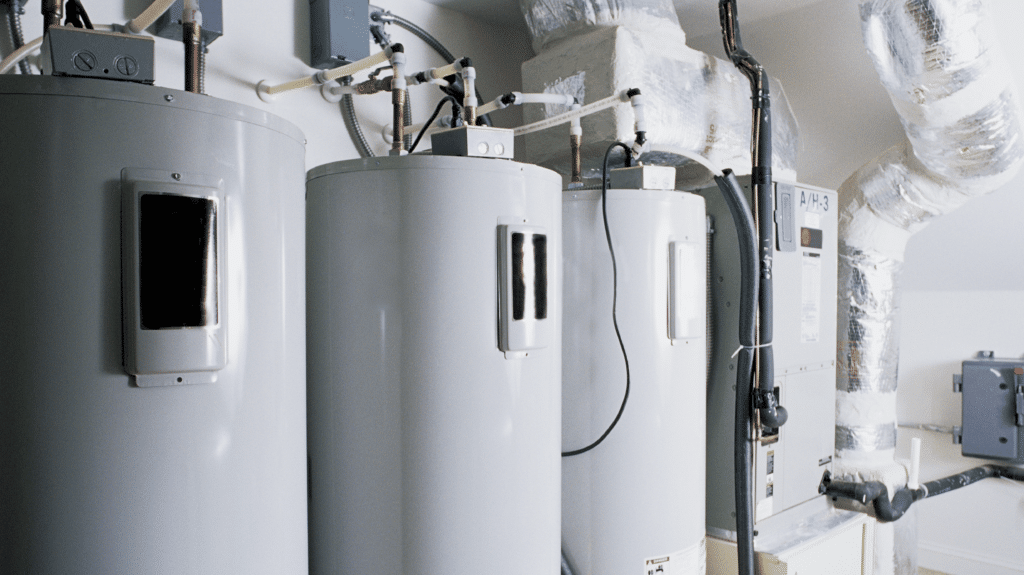A Complete Water Heater Maintenance Checklist
Insulate Your Tank
Adding insulation to your water heater tank is one of the easiest water heater maintenance steps you can take. It can help keep the water hot and reduce energy costs. It can also extend the life of your water heater.
Here’s how to insulate your tank:
- Cut the insulating blanket to fit around pipes, the TPR valve, and the temperature control sticking out of the tank.
- Wrap the side of the tank, and seal cuts with foil tape. Do not cover the tops of oil or gas heaters.
- Cap an electric heater with an oversize circle of insulation, and tape its edge securely to the side of the tank
An annual water heater flush can extend the life of the unit by several years while making it work more efficiently.”
Make Sure Your Water Heater Temp is Correct
When we think of hot water heater maintenance tips, we usually think of the physical water heater itself and not the water in it. Water heaters are frequently set to high temperatures, sometimes up to 140 degrees, which can lead to excessive energy consumption and reduce the unit’s lifespan. Lowering the temperature to as low as 120 degrees can also prevent scalding, particularly if you have young children or elderly relatives in your household.
Here’s how to adjust the temperature:
- Find the temperature dial on the side of the tank and unscrew its cover. Adjust the dial to 120 degrees using a flathead screwdriver. For every 10 degrees the temperature is lowered, you can expect to save up to 5 percent in energy costs.
- Turn the water heater off or the thermostat down to its lowest setting if you plan to be away from home for more than three days.
Insulate the Water Heater Piping
In addition to insulating your water heater tank, insulating the exposed pipes leading to and from your water heater is another of the hot water maintenance steps you can take that will also reduce your energy costs. This will help keep the water hot as it travels through the pipes and reduce energy costs. Insulating pipes also protects them from freezing during the winter.
Here’s how to insulate the pipes:
- Buy some self-sticking 3/8-inch-thick foam pipe insulation that matches the pipes’ diameter.
- Slide the foam over the hot-and cold-water pipes as far as you can reach. Insulating the cold-water pipe prevents condensation in summer.
- Peel the tape and squeeze the insulation closed. If the pipe is 6 inches or less from the flue, cover it with 1-inch-thick unfaced fiberglass pipe wrap.
Check the Anode Rod
The anode rod protects the tank from corrosion by attracting corrosive elements in the water and corroding them instead of the tank. It needs to be checked every few years and replaced when necessary, typically every five years, depending on your water type.
Here’s how to check the anode rod.
- Put a hose to the tank’s drain cock and let out a few gallons of water.
- Now fit a 1 1/16-inch socket onto the rod’s hex head on top of the heater (or under its top plate) and unscrew the rod. If it’s less than ½ inch thick or coated with calcium, buy a new one, wrap its threads with Teflon tape, put it back in the tank, and tighten securely. Use this segmented rod if headroom above the tank is limited.
Flush Your Water Heater a Few Times a Year
Flushing the water heater tank is crucial for eliminating sediment buildup at the bottom of the tank, which can significantly reduce the unit’s efficiency over time, especially if you have hard water. This step also helps avoid corrosion.
Here are the basic steps for flushing your water heater.
- Drain the remaining water in the tank into the bucket, then stir up the sediment on the tank’s bottom by briefly opening the cold-water supply valve. Drain and repeat until clean water comes out of the hose.
- Close the drain cock, refill the tank, and turn its power back on.
- Never turn on a water heater that has an empty tank!
Pay Attention to The Pressure Valve
The pressure Valve/TPR is a crucial safety component that is designed to relieve pressure when the water in the tank becomes excessively hot. The recommended schedule is to test this monthlyl
Here are the steps to check your pressure valve:
- Shut off the power and the cold-water supply valve.
- Place a bucket under the pipe connected to the temperature-pressure-release (TPR) valve on the top or side of the tank. (This valve opens if the tank pressure gets too high.)
- Lift the valve’s tab to let some water out, then let go. If water keeps flowing, drain the tank partway, unscrew the old valve with a pipe wrench, and install a new one.

If plumbing is the question, just ask Bill. He has 25 years of experience in the industry!
Give him call at 816-828-2455 or send an email to bill@billfrytheplumbingguy.com

